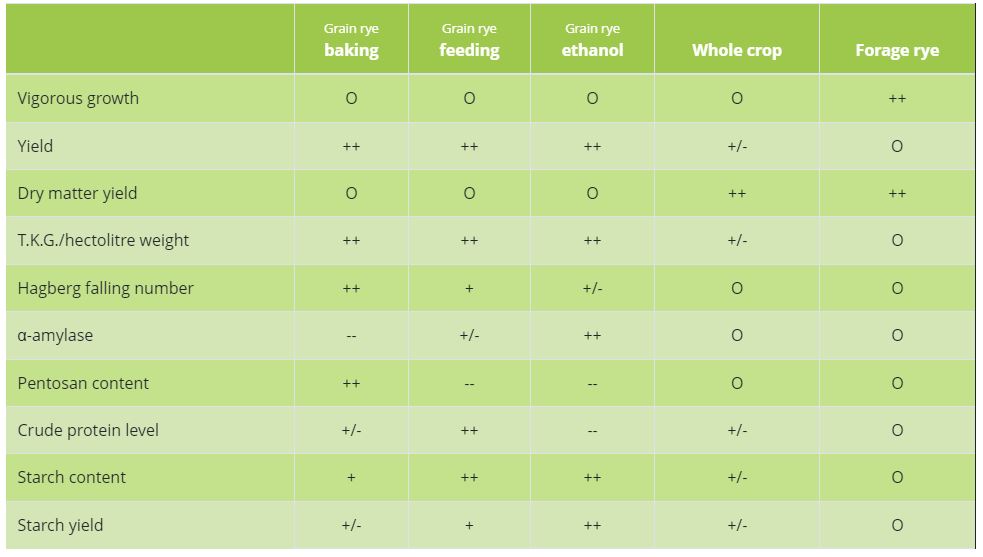Breeding & Breeding Progress
In the age of climate change, the future growth drivers will not be as much fertilisation intensity, plant protection or agricultural machinery but more plant breeding and digitalisation.
Especially in regard to rye cultivation breeding new high yielding varieties is the most important factor influencing yield, efficiency and profitability. Hybrid rye breeding is a success story.
A hybrid variety results from targeted crossing between a small number of inbred lines, which are intensively selected for their self-performance and their ability to combine. The seed parents are taken from the Petkus and the pollen parents from the Carsten gene pool. Until a variety is marketable the breeding process takes about 10 years.
Due to targeted use of heterosis the annual breeding progress of hybrid rye is about 1 % – this is unique in cereal breeding. Rye is particularly well suited for the hybrid method because of its flowering biology as cross-pollinator. Thanks to hybrid breeding the breeding company HYBRO was able to accelerate the yield breeding progress without any loss in quality or susceptibility to disease.
On the contrary, the varieties have been improved in regard to foliar health and have a higher sprouting resistance. Therefore, it can be expected that the yield advantage of hybrid rye compared to conventional rye will increase even further in the future.
Breeding Hybrid Varieties
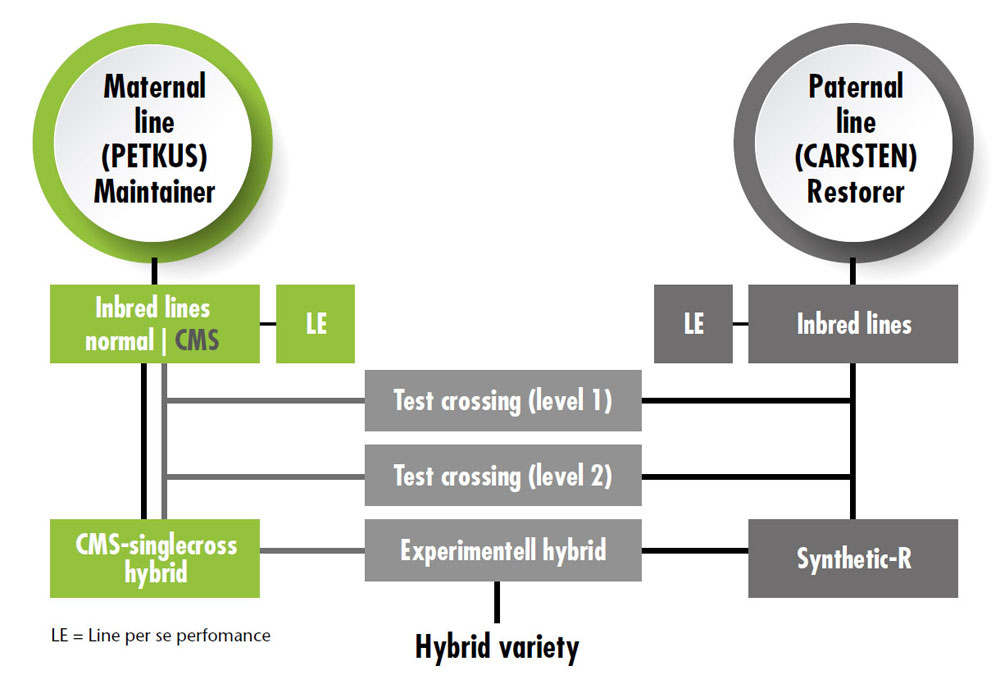
Breeding progress expressed in simple numbers means that since the introduction of hybrids of one hectare hybrid rye 7 more pigs can be fed, 2000 more bread loaves baked or 500 l more biofuel can be produced. Furthermore, 1600 kWhel more electricity can be produced. This is approximately the annual electricity consumption of a one person household.
Breeding Progress
More from 1 ha of hybrid rye
Number of pigs
kwh/ha
+7
+1.600
28
–

7400
–

1984
2019
1989
2019
Number of rye breads
L. Bioethanol
+2.000
+500
8.000
–

2.100
–

1984
2019
1984
2019
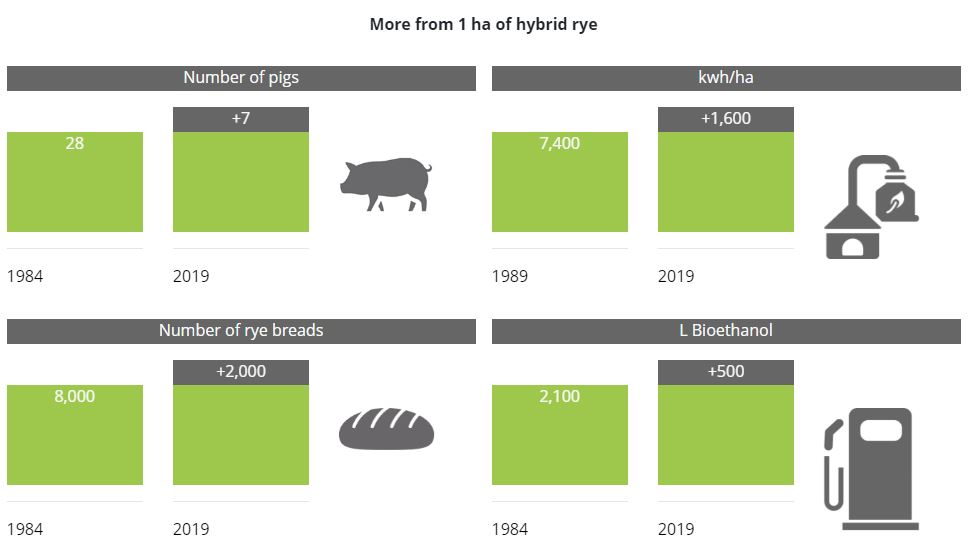
Breeding Progress Hybrid vs. Conventional
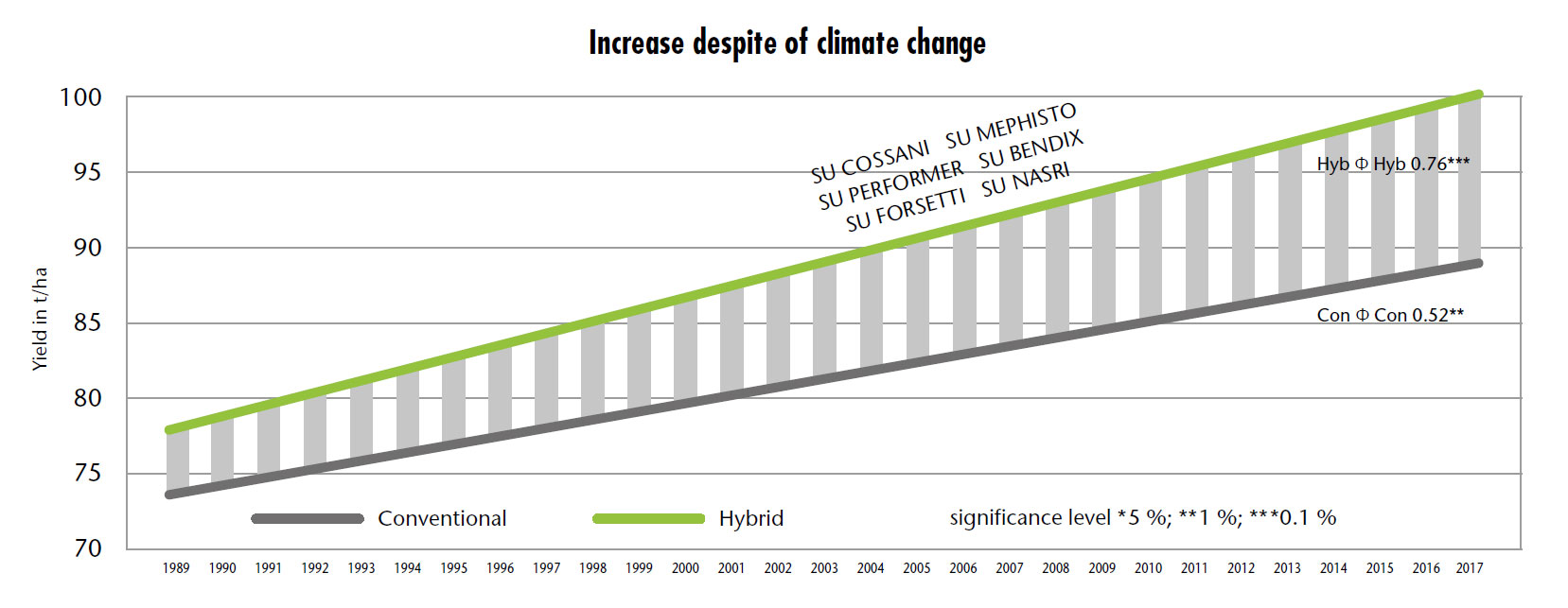
On 16 international sites SAATENUNION breeds, selects, tests and produces hybrid rye seed, among others in Kleptow, Wulfsode and many other German sites as well as in Poland, Russia, France, Italy and Hungary.
Because of an extensive network of breeding trials comprehensive information on new candidates can already be collected before they go for registration. It covers various countries, growing regions and soil qualities.
Testing network
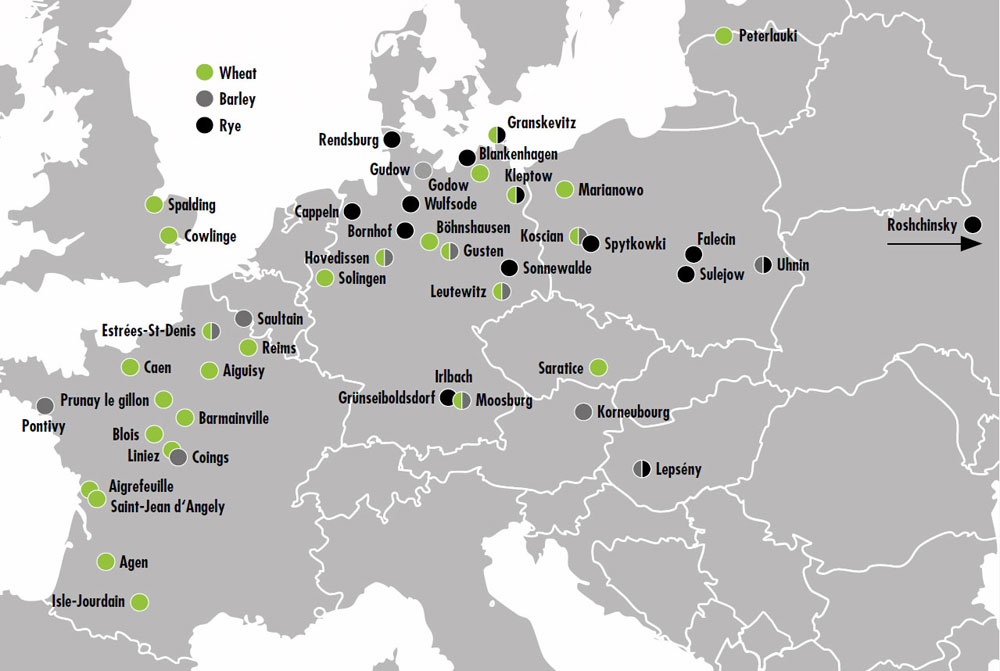
Like that varieties can be selected suitable to a specific environment and to achieve the desired breeding objectives. Depending on the use different requirements are demanded of the plant or grain. As a result, breeding objectives are sometimes very contradictory and breeding programs very extensive and diverse. For example, while the pentosan content is indispensable for the baking quality of rye they are less desirable in feeding.
Breeding objectives
.
Grain rye
Grain rye
Grain rye
.
.
.
baking
feeding
ethanol
Whole crop
Forage rye
Vigorous growth
O
O
O
O
++
Yield
++
++
++
+/-
O
Dry matter yield
O
O
O
++
++
T.K.G./hectolitre weight
++
++
++
+/-
O
Hagberg falling number
++
+
+/-
O
O
α-amylase
--
+/-
++
O
O
Pentosan content
++
--
--
O
O
Crude protein level
+/-
++
--
+/-
O
Starch content
+
++
++
+/-
O
Starch yield
+/-
+
++
+/-
O
